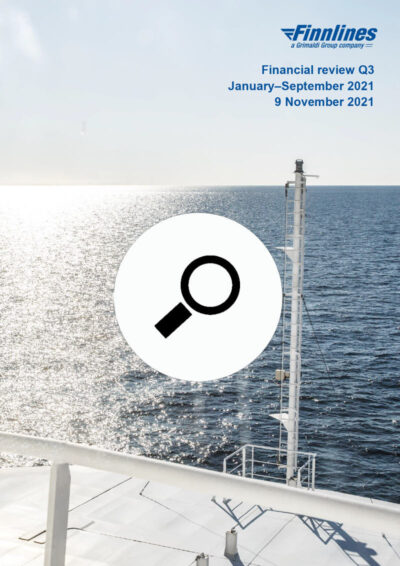November 11, 2021
January–September 2021
+17% Revenue EUR 425.9 million (EUR 363.1 million in 2020).
+27% Result EUR 69.0 million (EUR 54.2 million)
EBITDA EUR 121.2 (107.2) million
Cargo units 583,000 (536,000 in 2020)
Cars 124,000 (102,000)
Tons of freight not possible to measure in units 1,041,000 (811,000)
Passengers and truck drivers 439,000 (390,000)
- An upward trend continued during Q3 when cargo volumes increased nearly on all routes.
- The automotive industry suffered from shortage of components and the summer stoppage was longer than anticipated. However, as the Finnlines fleet consists of vessels in different sizes, capacity could be moved from routes with temporarily declining demand to others where larger capacity was needed.
- When travel restrictions were gradually eased, recreational travel recovered although passenger numbers remained far below the normal level.
- To reach the ambitious goal of becoming carbon neutral, it may be necessary to modify existing ships with new tanks and engines so that they can run on new types of fuel. However, at current rates of production, zero-carbon fuels are not commercially available at the scale needed for the global fleet. Today, Finnlines concentrates on new battery technology, hydrodynamic design in vessels, air lubrication systems and solar panels on its newbuilds. Several existing ships will be equipped to use onshore power where available. Moreover, gradual transition to carbon-free and renewable fuels is being investigated.
- The construction of three hybrid ro-ro vessels and two state-of-the-art ro-pax vessels is proceeding.
- Energy efficiency is the best way to reduce the emissions and reach immediate results.



